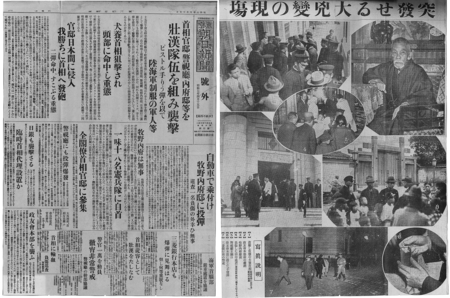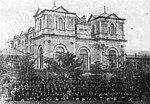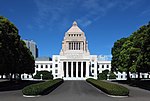May 15 incident
1930s coups d'état and coup attempts1932 in Japan1932 murders in JapanAssassinations in JapanAttempted coups in Japan ... and 8 more
Conflicts in 1932Events that led to courts-martialFascist revoltsMay 1932 eventsPolitics of the Empire of JapanRebellions in JapanShōwa RestorationTerrorist incidents in the 1930s

The May 15 Incident (五・一五事件, Goichigo Jiken) was an attempted coup d'état in the Empire of Japan, on May 15, 1932, launched by reactionary elements of the Imperial Japanese Navy, aided by cadets in the Imperial Japanese Army and civilian remnants of the ultranationalist League of Blood (Ketsumei-dan). Prime Minister Inukai Tsuyoshi was assassinated by 11 young naval officers. The following trial and popular support of the Japanese population led to extremely light sentences for the assassins, strengthening the rising power of Japanese militarism and weakening democracy and the rule of law in the Empire of Japan.
Excerpt from the Wikipedia article May 15 incident (License: CC BY-SA 3.0, Authors, Images).May 15 incident
Roppongi-dori Avenue, Chiyoda
Geographical coordinates (GPS) Address Nearby Places Show on map
Geographical coordinates (GPS)
| Latitude | Longitude |
|---|---|
| N 35.6725 ° | E 139.7438 ° |
Address
Roppongi-dori Avenue
100-0013 Chiyoda
Japan
Open on Google Maps









